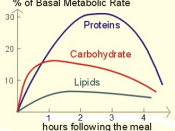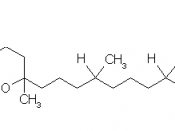EVALUATION OF THE SELECTED MICRONUTRIENT AND ENERGY INTAKE AGAINST THE NUTRIENT REFERENCE VALUES (NRVs) BY USING 24-HOUR DIETARY RECALL METHOD ON A 20 YEAR-OLD TEENAGER
Abstract
Objectives: To estimate a 20 year-old teenager's micronutrient and energy intake using a 24 hour recall technique; test the validity of energy intake against the Energy Intake (EI): Basal Metabolic Rate (BMR) ratio using the Goldberg cut-offs developed by Goldberg and colleagues, and evaluate the 'adequacy' or 'inadequacy' of micronutrient and energy intake using current Nutrient Reference Values (NRV's).
Methods: Dietary intake of subject was assessed using a semi-structured 24-hour diet recall. FOODSCAN 2000TM was used to analyse and calculate the micronutrients and energy content of the subject's dietary intake. Intakes of 6 micronutrients (Iron, Calcium, Zinc, Folic acid, Vitamin C, Vitamin A) were compared with current Australian and New Zealand nutrient reference values, rather than the RDIs from FOODSCAN 2000TM. Additionally, the ratio of Energy intake: Basal Metabolic Rate was calculated and compared with the Goldberg Cut-Offs to check the validity of the reported energy intake.
Results: The total amount of selected micronutrients and energy intake consumed in the last 24 hours were analysed by the FOODSCANTM database, and then manually calculated (Iron=29mg, Calcium=1248mg, Zinc=25mg, Folic acid=500ug, Vitamin C=145 mg, Vitamin A=2207ug, Energy Intake=12829 kJ). The Basal Metabolic Rate was 5136 kJ, which was predicted by Schofield Equation. Additionally, the ratio of Energy Intake: Basal Metabolic Rate is 2.5 which was greater than cut-off value 1.35.
Conclusion: Most of the micronutrients and energy intake consumed by the subject were above the Recommended Dietary Intakes (RDIs), except calcium intake was lower than RDI value, and the reported EI is a not plausible measure of habitual diet, although there were several limitations.
Introduction
The nutritional status of individuals is important throughout life. Teenager...


